March 30, 2022
Romancing Shade, Even in Winter
We know that gardens are always changing, so I bet that the legacy live oak trees are all that’s left from the original landscape when this Tudor-style house was built in 1938. Tucked into a central Austin neighborhood, its storybook character romanced our visit in December, an overcast morning just days before Christmas.
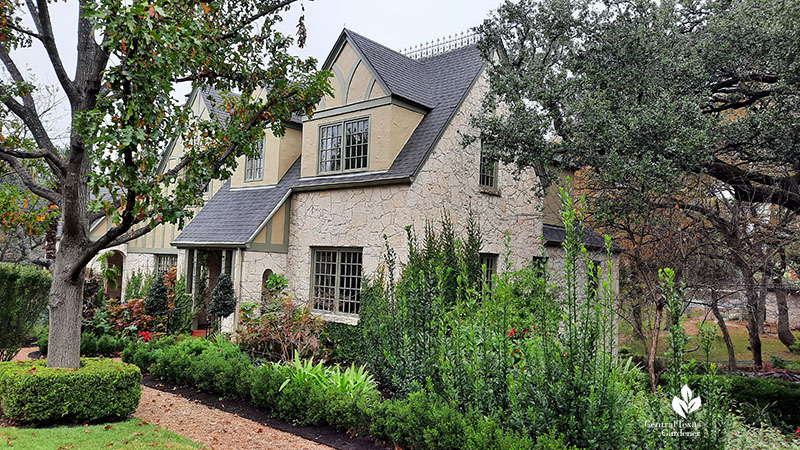
Since 2003, landscape designer Kim Beal has responded to every issue under the sun, drought, gully washer, and hard freeze. Founder of Rain Lily Design with wife Stephanie Scherzer, they’ve now handed the reins over to long-term employee, Meredith Gresham.
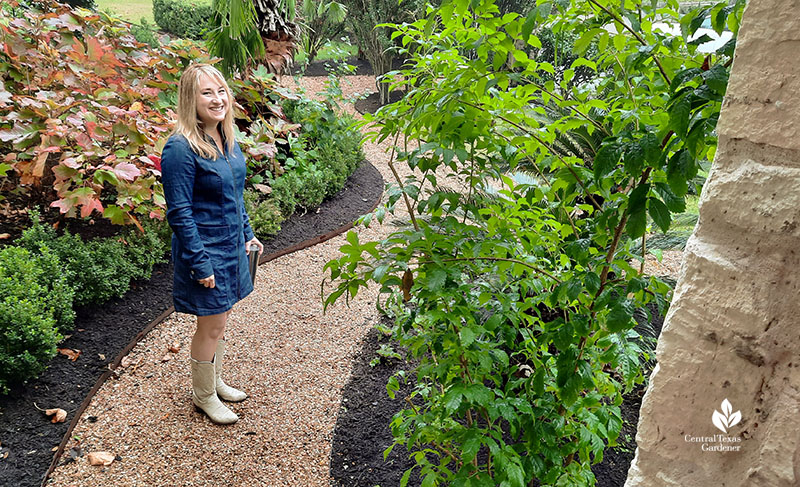
When I visited on The Garden Conservancy Open Days tour in fall 2019, deeper shade dominated the view, even on a sunny morning. Of course, the red oak in front hadn’t yet shed its leaves.
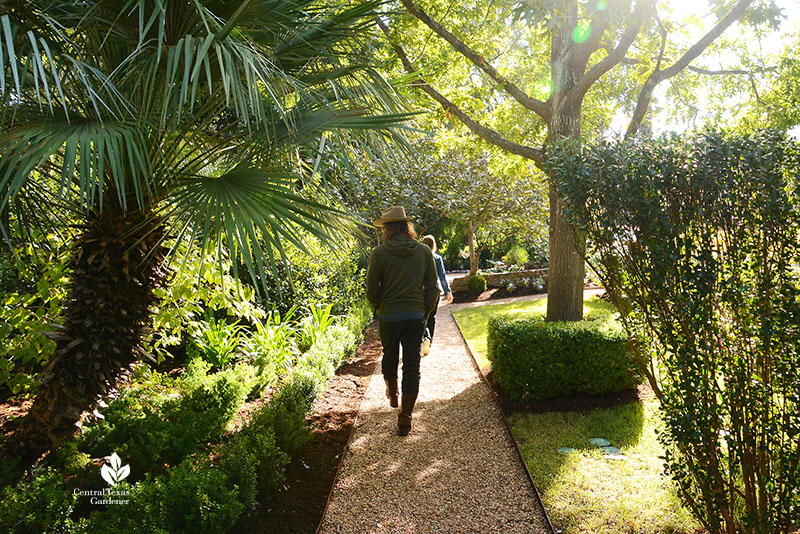
Then, the great freeze of February 2021 severely damaged the red oak and Mediterranean fan palms. The garden’s formal lines, courtesy of boxwoods, native sabal palms, and street-side Burford holly hedge, maintained their evergreen structure and easily adapted to the lighting change.
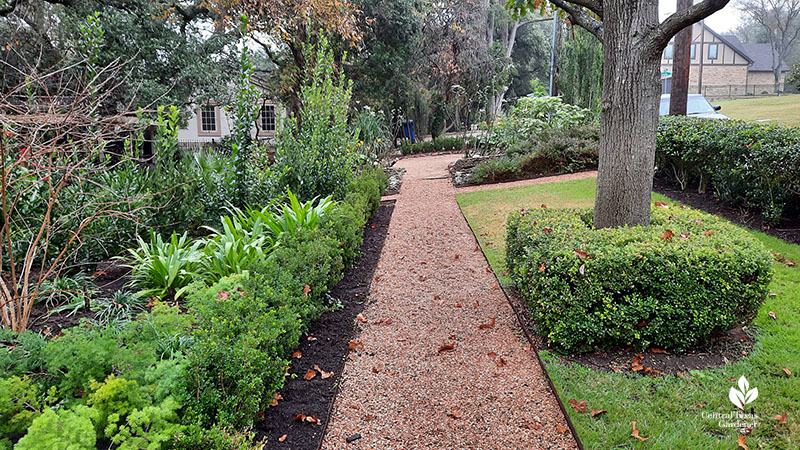
Along the way, Kim made her own changes as the garden grew. One was to move a cherry laurel hedge away from the path that it was crowding, replacing it with evergreen bay laurel that sailed through the freeze.
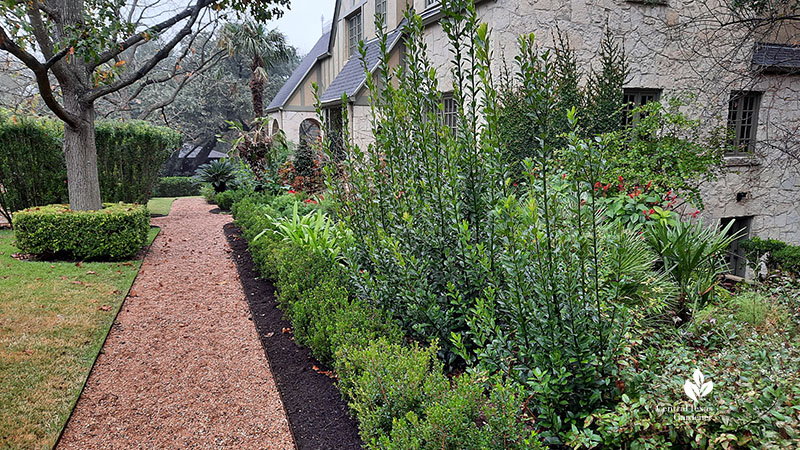
Kim chose pea gravel for the paths, since it allows rainwater percolation to the soil, and its round stones are comfy for bare feet. It’s also a relatively inexpensive way to create paths that don’t need to be replenished (like decomposed granite) and are far less prone to weeds. “It has a very Old World kind of European look, which I think really works well with the Tudor house,” she said.
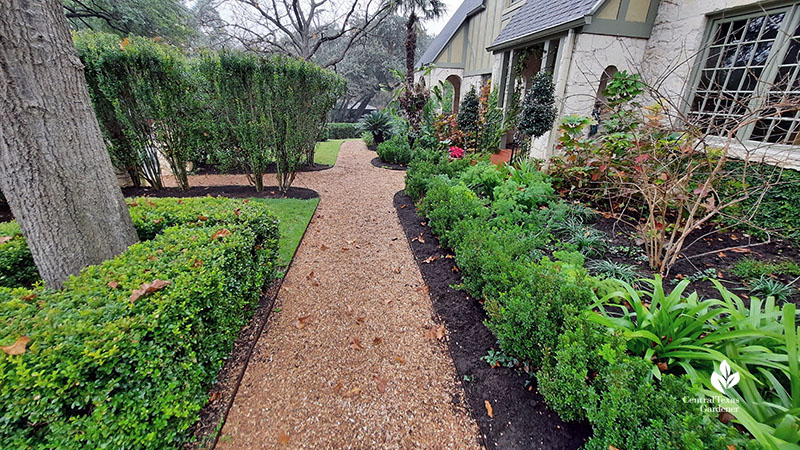
To embrace the entrance walkway, an allee of ‘Will Fleming’ yaupon hollies joins legacy stone pillars capped with colorful smooth stones.
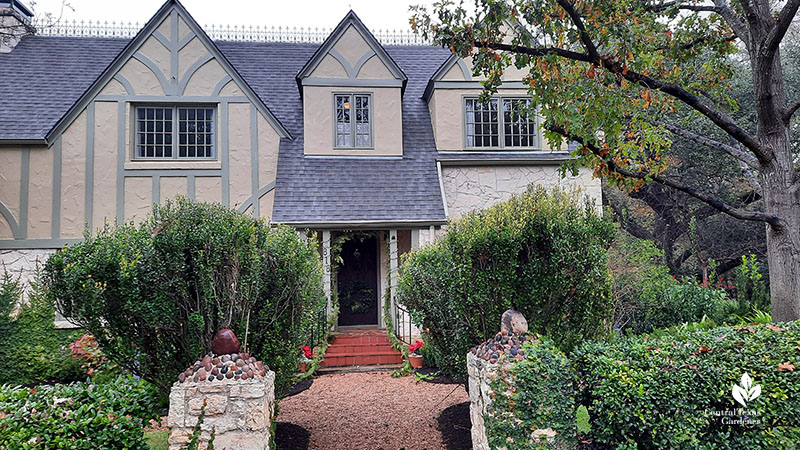
“As this garden got shadier and shadier, we really had to think of how do we keep the garden beautiful and interesting without a lot of big, colorful flowers? And so, we focused a lot on textures,” Kim said.
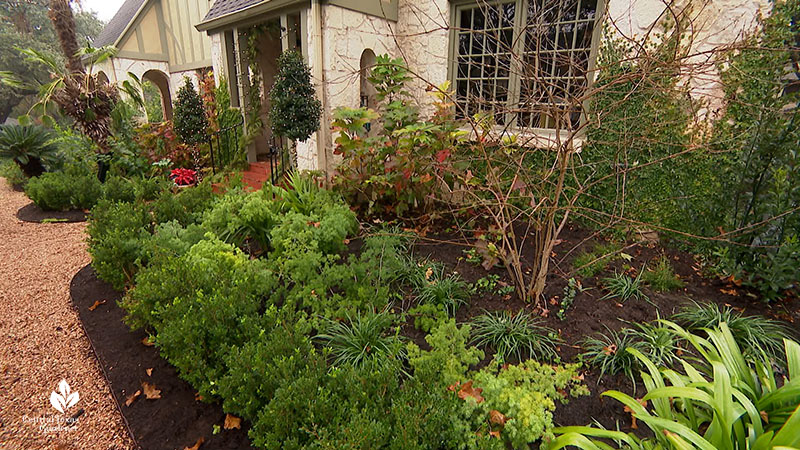
Oakleaf hydrangea leads the fall “leaf peep” with crimson and orange hues spilling over its boxwood hedge.
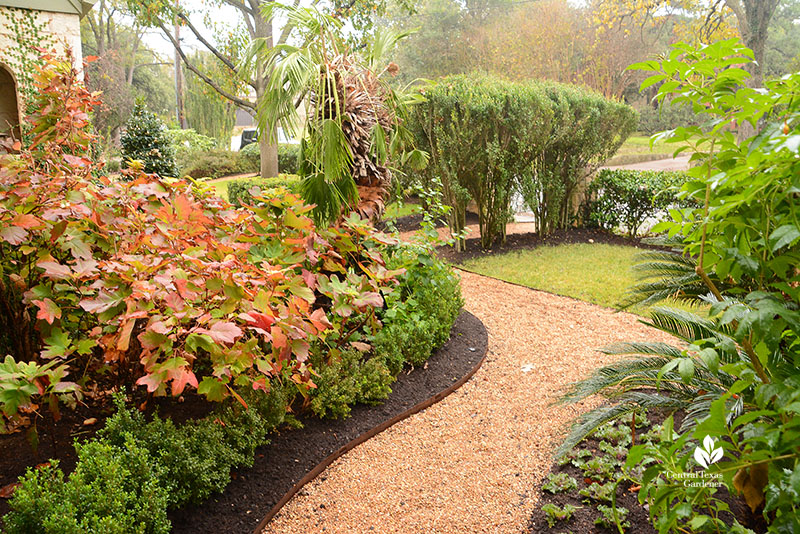
Here, it joins fuzzy Ming fern. Earlier, American beautyberry—dormant on our visit—dominated the central spot with long clusters of purple berries snapped up by birds.
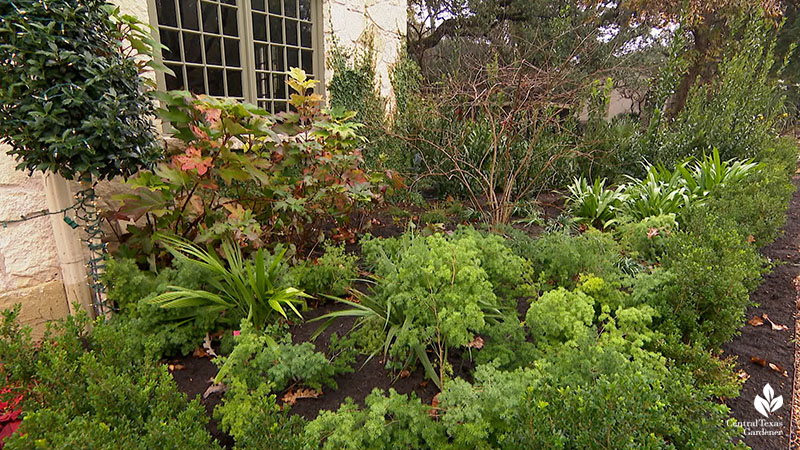
In late spring, strappy Johnson’s amaryllis shoots up dazzling red trumpets. (In early spring, lavender native spiderworts companion this spot.)
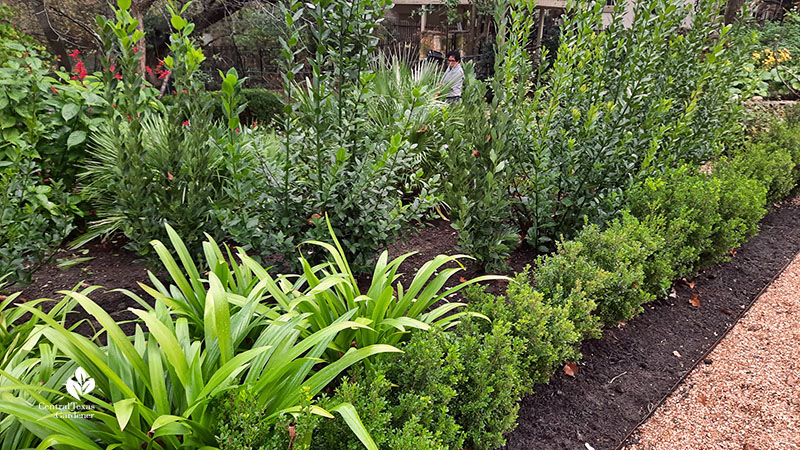
Formal lines meet Austin casual as Kim pairs hollies with duranta, salvias, spider lilies, and plumosa (asparagus) fern. They all weathered the severe cold like champs. One reason behind their resilience is that Rain Lily composts and mulches at least yearly.
In a cove alongside their neighbor, the family once grew vegetables until it got too shady. So, Kim framed it as an intimate front yard sitting area. Here’s the view in 2019.
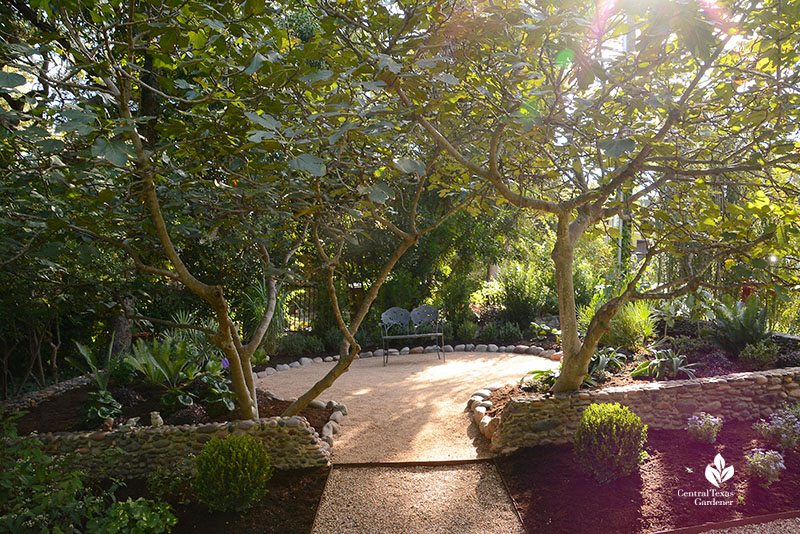
The freeze changed its dynamics. Kim’s added narrow ‘Scarlet’s Peak’ yaupon hollies as a screen at the back. The stone-embedded defining walls indicate that this was always a defined area of some kind.
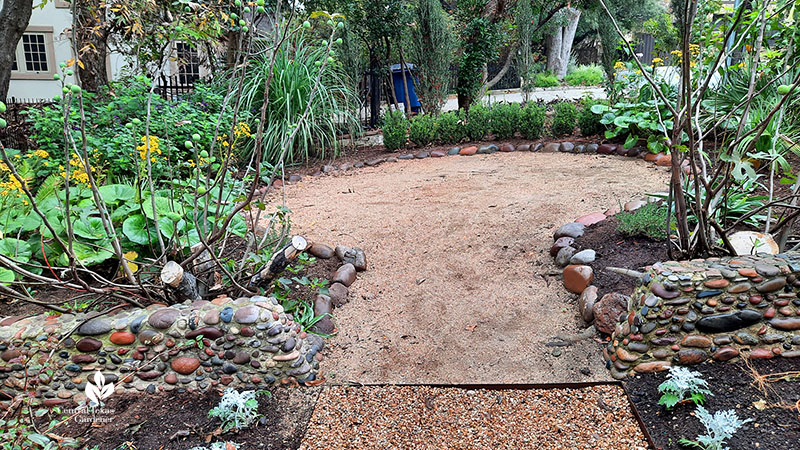
Although the fig trees are smaller, they still gracefully frame the cove’s entrance.
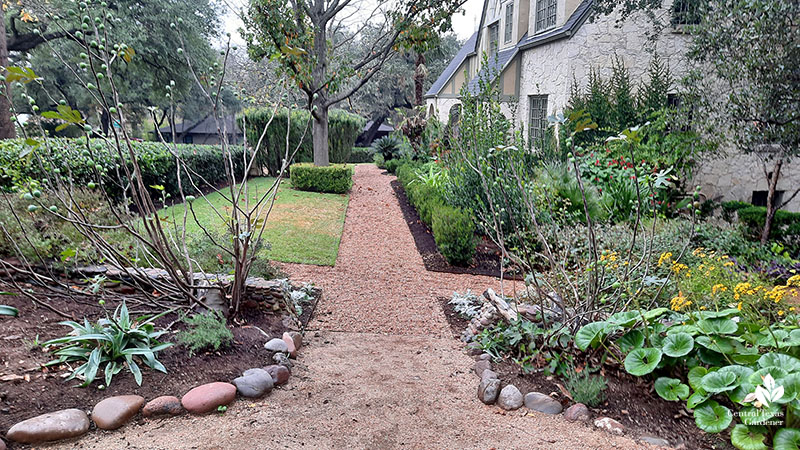
Another view from 2019 illustrates a young ligularia against boxwood and flowering persicaria.
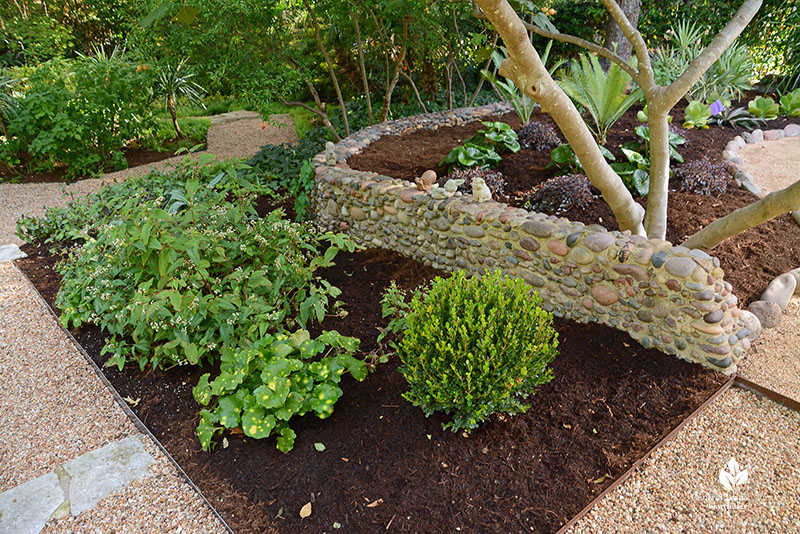
Kim’s added more ligularias for their standout lily pad-like foliage and striking fall flowers.
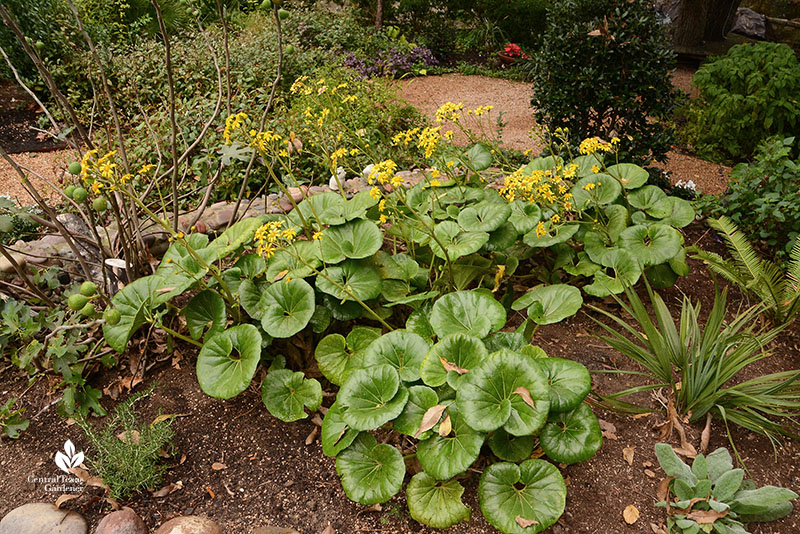
A relocated lemongrass joins purple-blooming Salvia guaranitica and lamb’s ears.
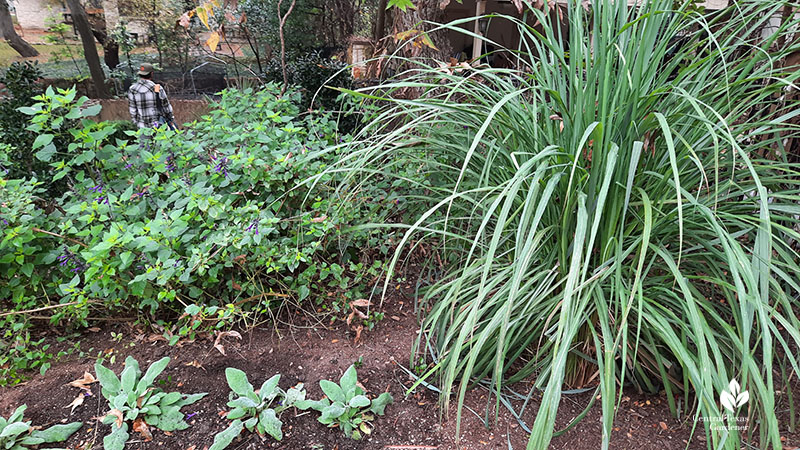
One must-have beauty for dry shade that I’m definitely adding: native bush morning glory (Ipomoea leptophylla). Kim assured us that it made it through freezes. Plus, butterflies and moths love those tubular flowers in soft pink or white.
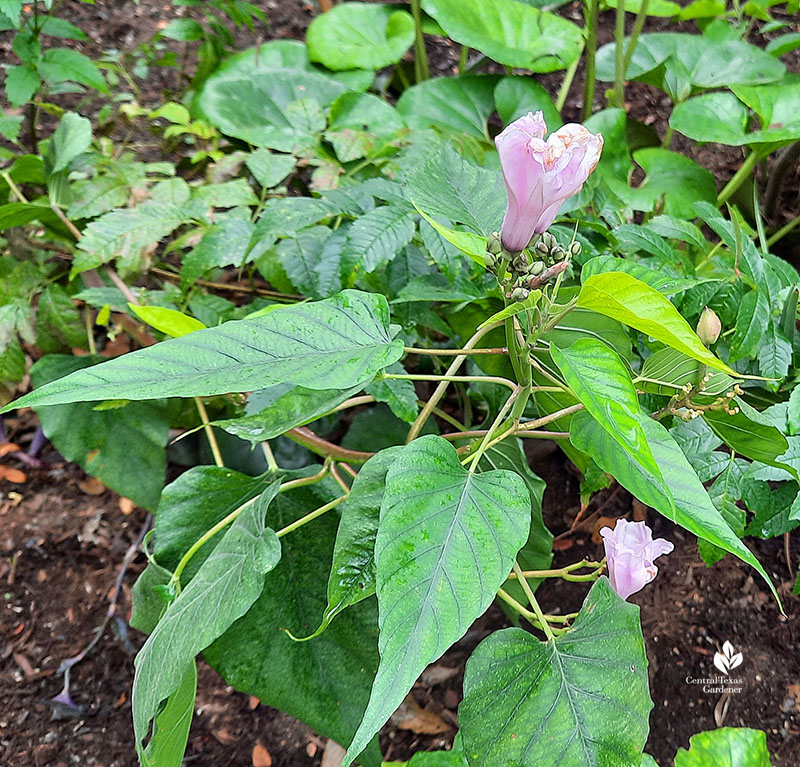
Brugmansia, also known as angel’s trumpet, also sailed through various freezes.
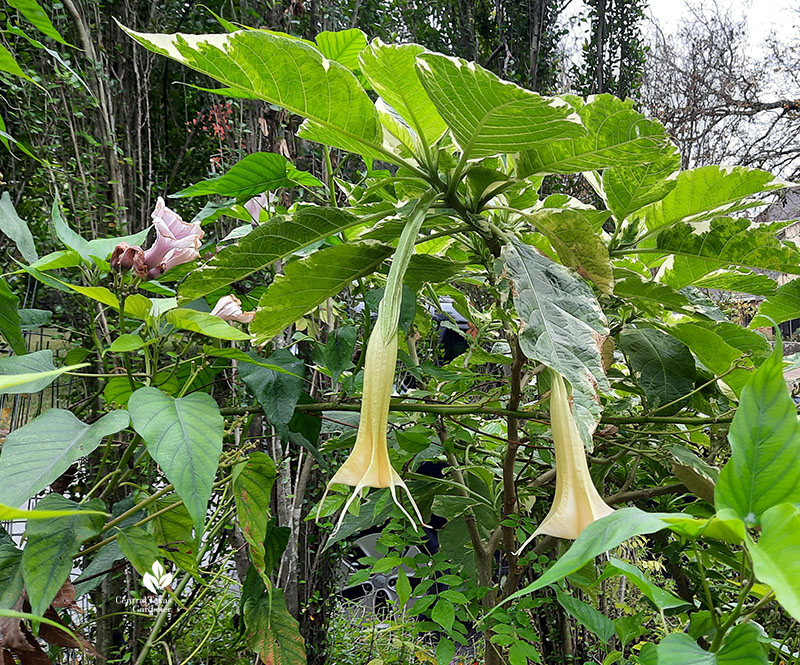
In 2019, native fragrant (fall) asters appeared to be new additions.
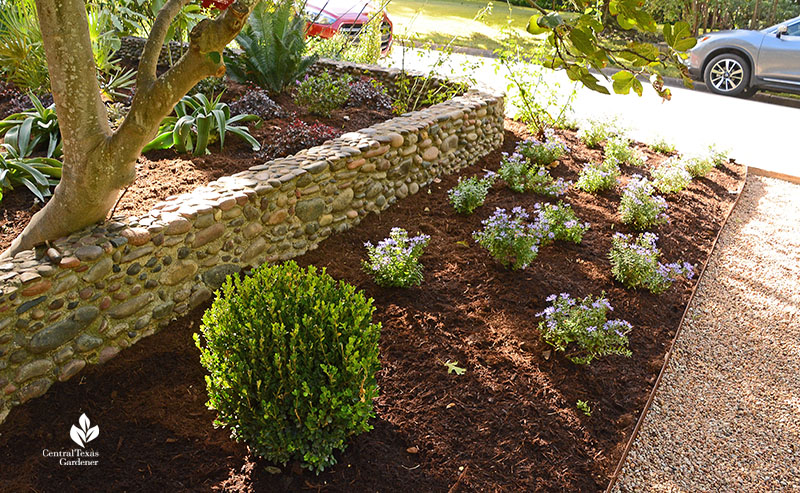
Last December, they’d already flowered robustly, evident by hundreds of seed heads on these clouds of native, drought tough perennials for part shade to sun.
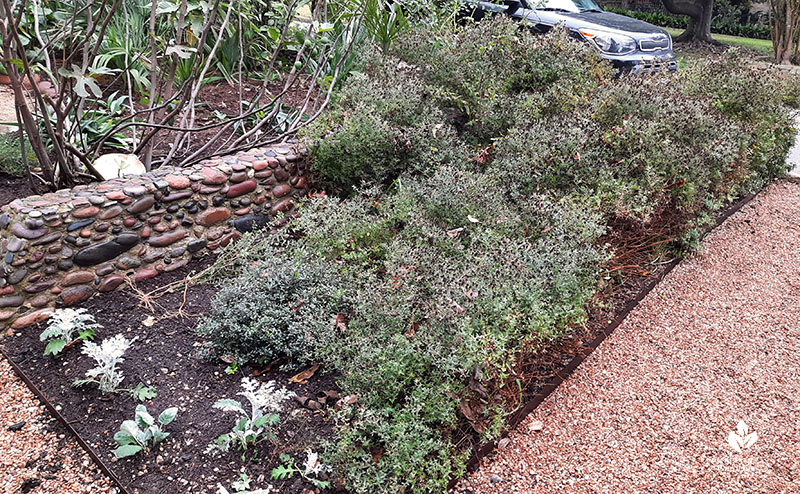
Make a left turn at the cove to head toward the backyard side garden, where a fire pit’s hosted many a birthday celebration.
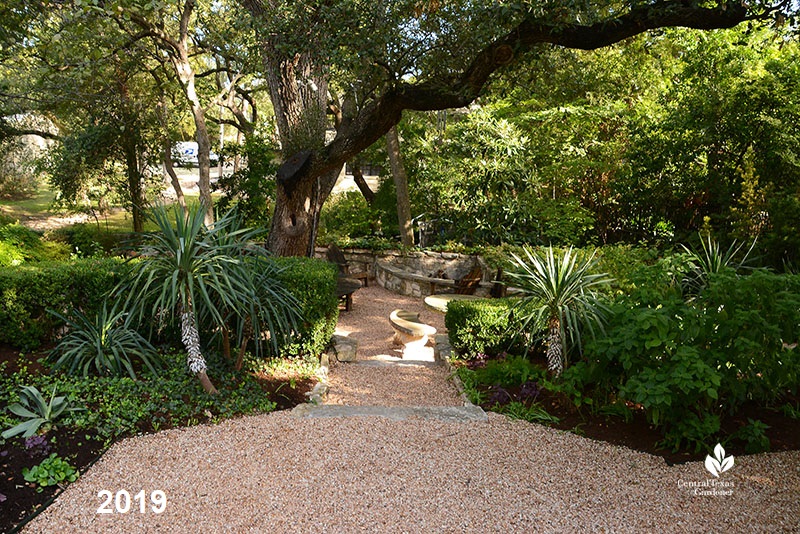
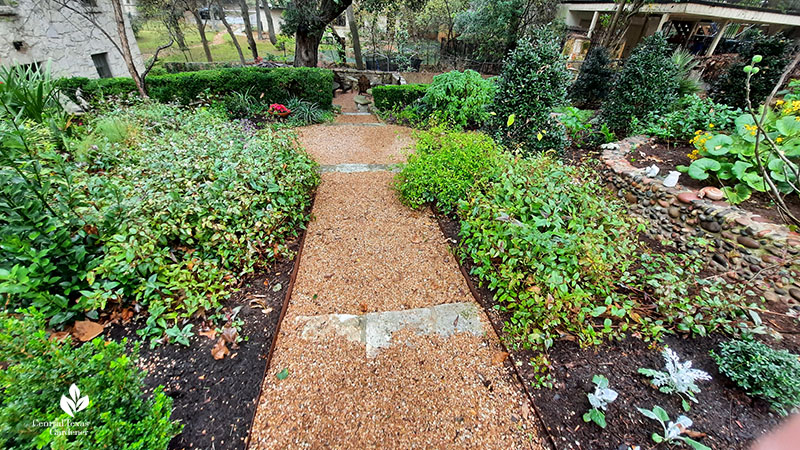
It had never been landscaped and its slope was gradually eroding. Rain Lily created gentle stone stairs on their pea gravel walkways, sourcing old moss-covered stones to blend in with the historic stonework.
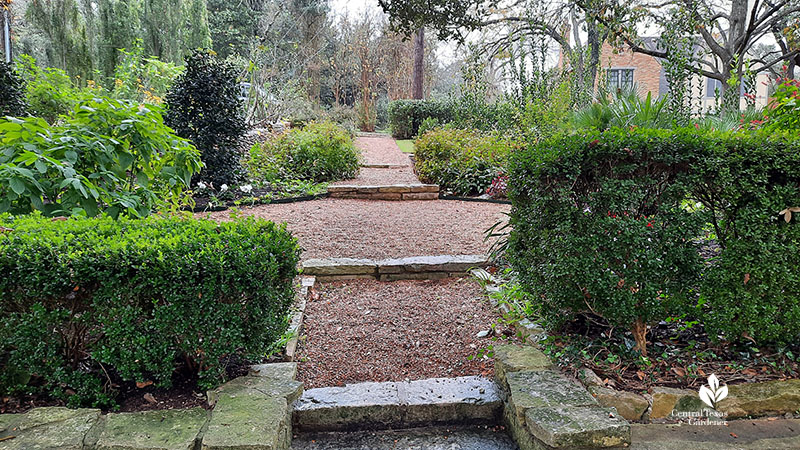
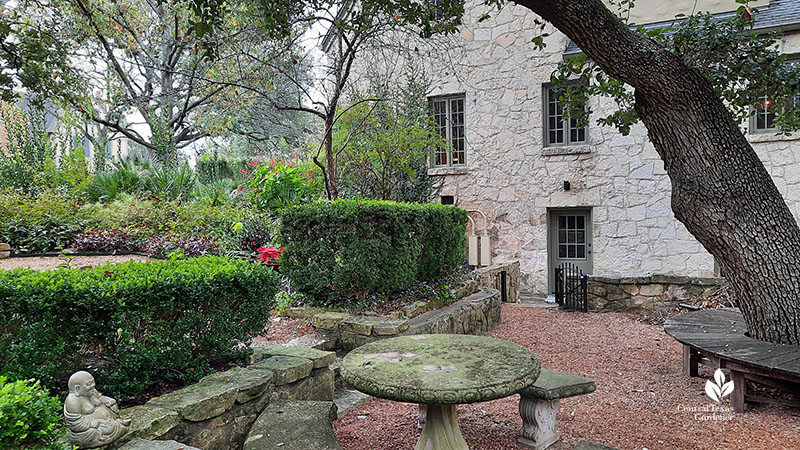
On the upper landing, purple oxalis, generous persicaria, sabal palms, and firespike frame the path with foliar dimension in height, color, and texture.
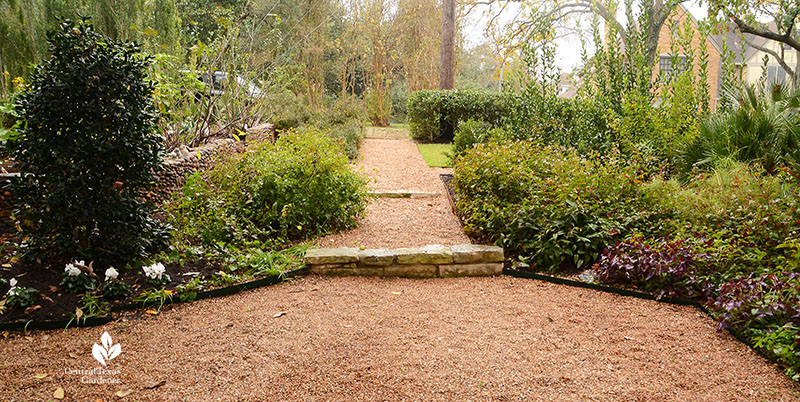
All made it through the great freeze, though cold-tender firespike (Odontonema cuspidatum) may need to be replaced.
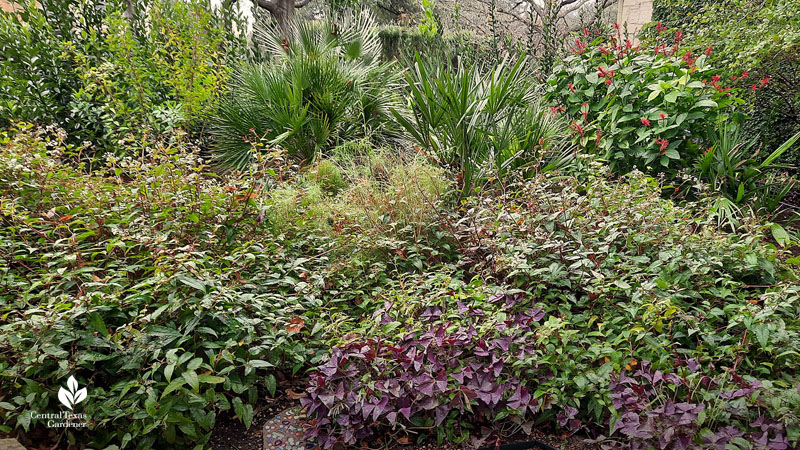
Firespike’s a delightful textural counterpoint to native sabal palm. Seasonal flowers are a bonus!
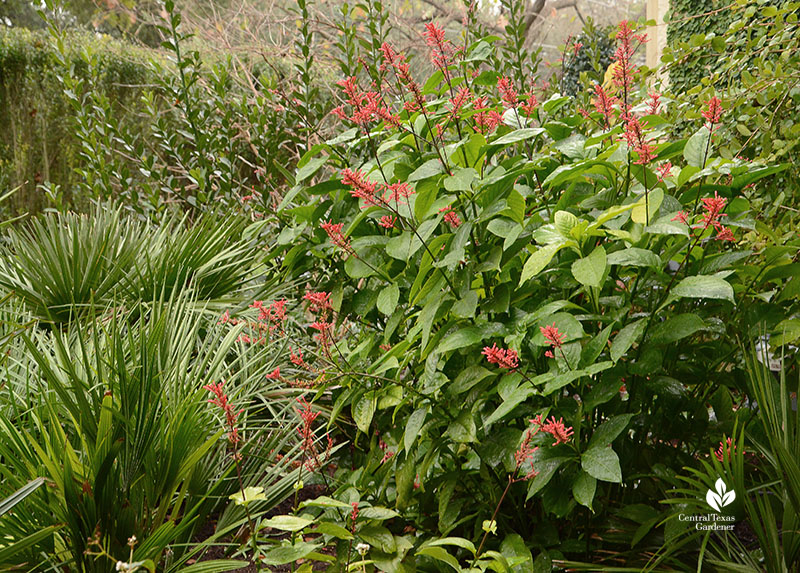
Along the fire pit patio’s paths, Kim repeated some of the same species for continuity with the upper gardens. She also added new ones, like shrubby ‘Cajun Fire’ ruellia. I’m sorry that we missed its fiery blooms!
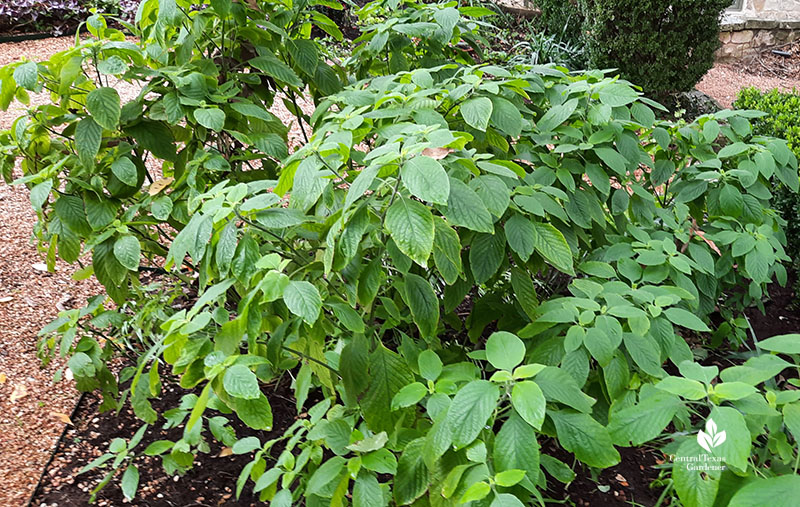
When the homeowners built a pool, they wanted it to look like it had always been there. They surrounded it with a stone wall that blends with the house, softened by fragrant sweet olives (large shrubs or small trees).
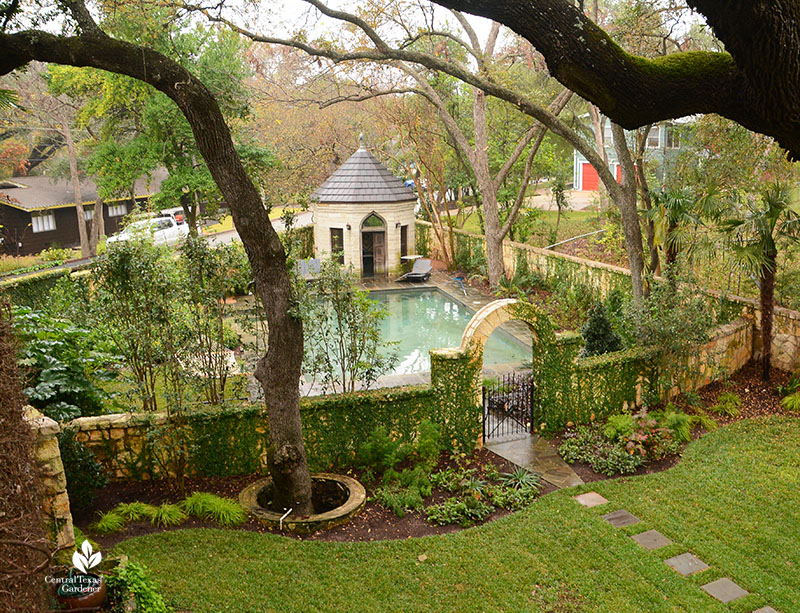
The wall’s stone arch entry features oakleaf hydrangea, persicaria, ming fern, tradescantia, and soft leaf yuccas. The fig ivy creeping up the arch is still recovering from the freeze. I like it better that way, since the stone is so lovely!
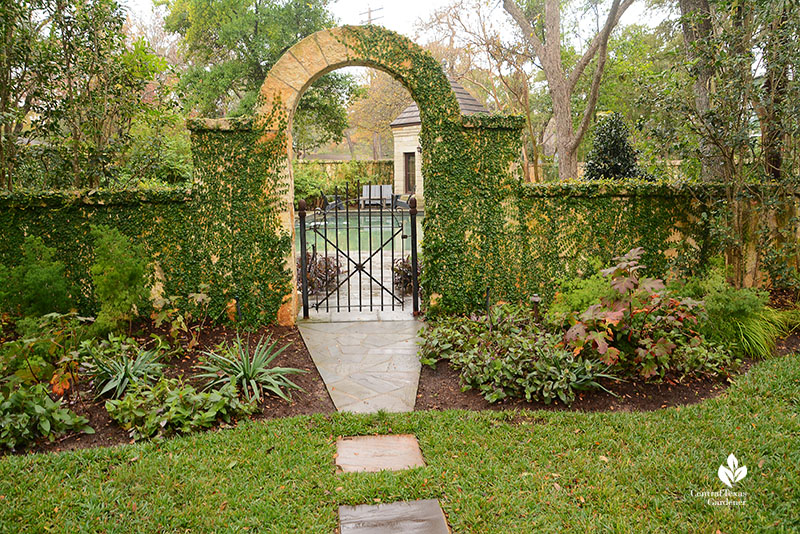
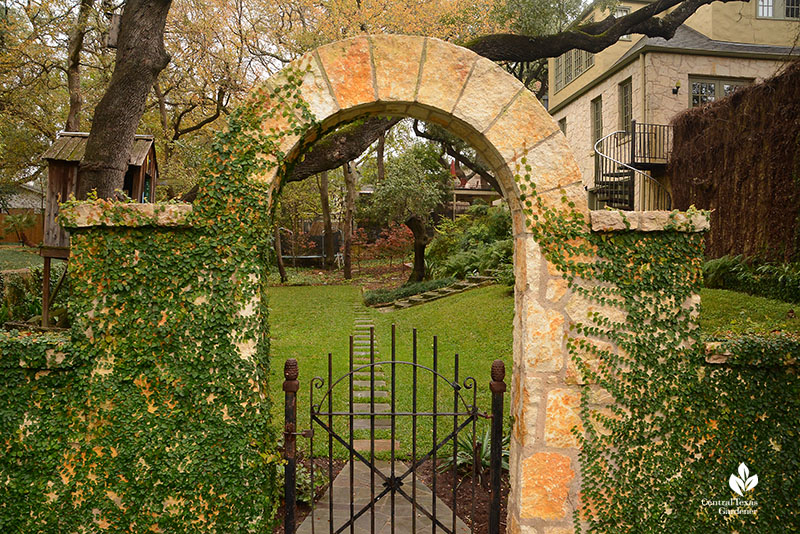
Inside, chartreuse ‘Everillo’ sedge pops against trailing purple heart (Tradescantia pallida ‘Purpurea’). Sweet olives perfumed our strolls even in December.
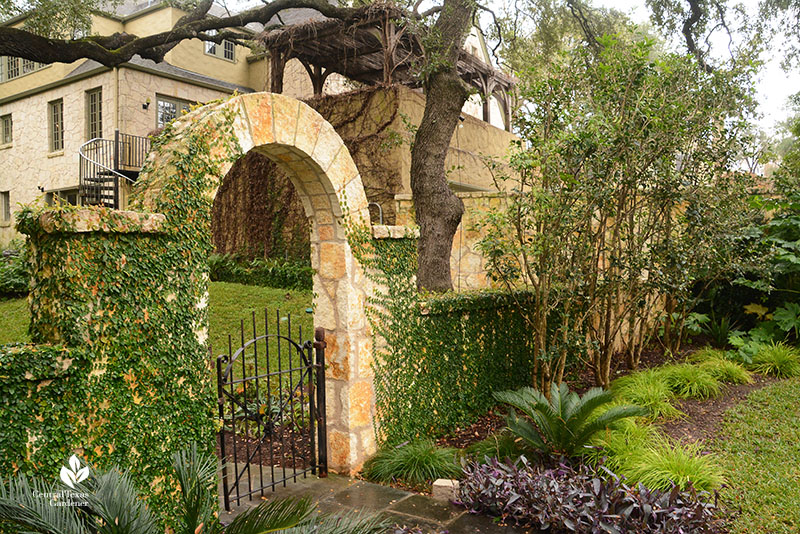
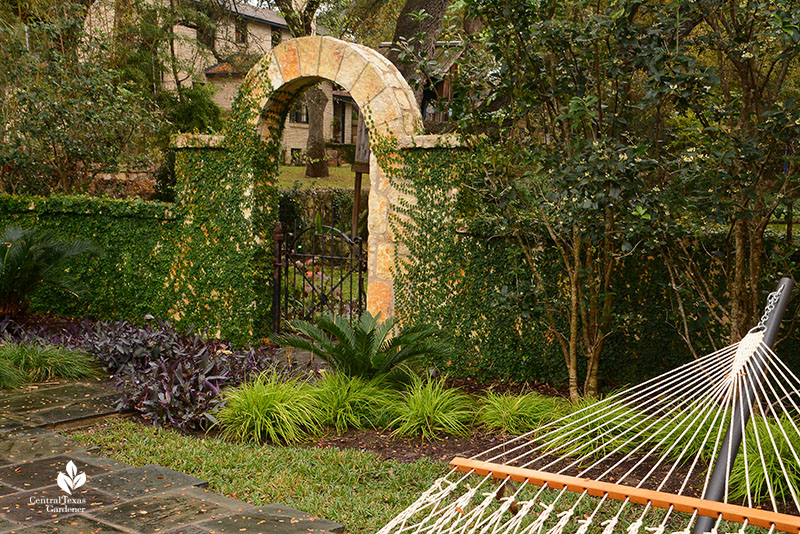
Kim goes for bold along to embrace the walls for a tropical flair with rice paper plant and windmill palms. She tucked in native sabal palms and red-blooming turk’s cap for the hummingbirds.
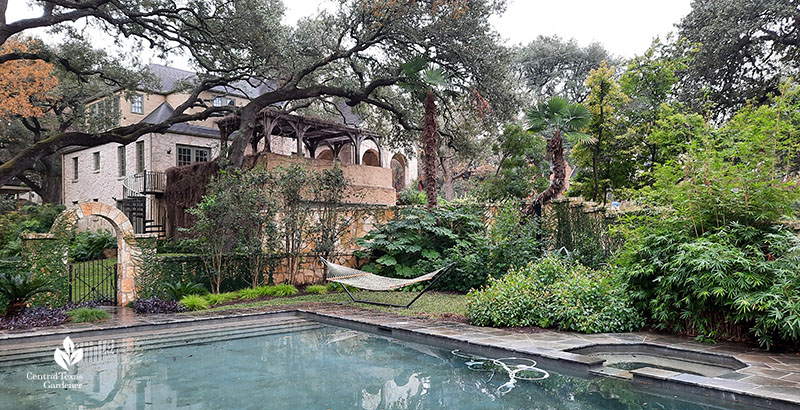
‘Fruit Salad’ shrimp plant pops in festivity.
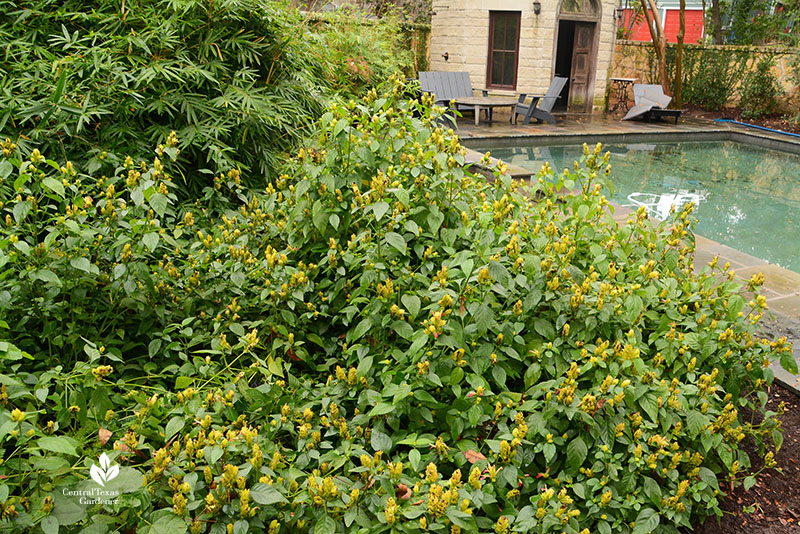
Kim admits that although shade gardens come with challenges, they’re such a bonus in Texas heat. “Our biggest weather foe is the heat. And so, if we can’t create spaces that are cool and inviting, then we’re not going to go outside.”
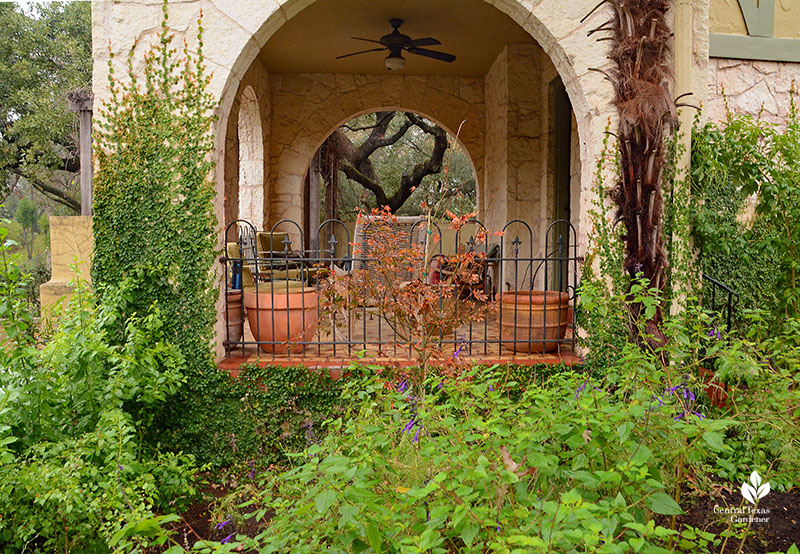
Watch Kim’s story now!
Thanks for stopping by!
Linda

